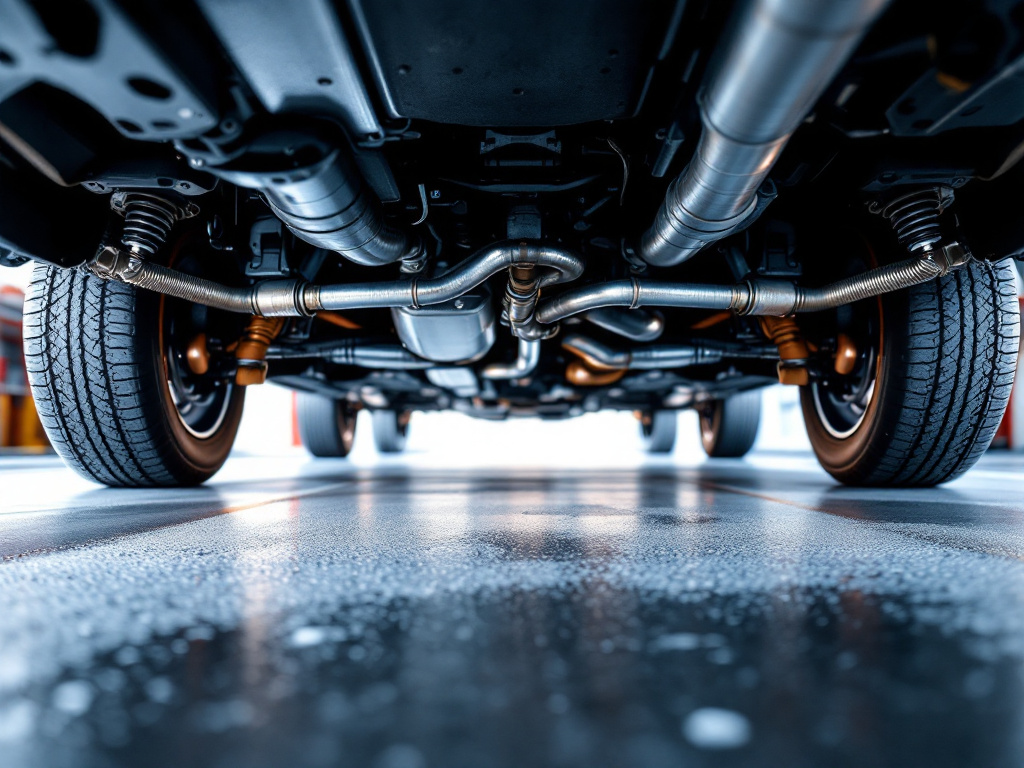
Stop Rust Before It Starts: The Complete Guide to Undercarriage Protection
Stop Rust Before It Starts: The Complete Guide to Undercarriage Protection
Undercarriage rust prevention is key to keeping your car sturdy and safe for years to come. If you drive in rainy or snowy weather, salt, mud, and slush can cling to the metal underneath your vehicle and slowly wear it down. The good news is, you can stop rust in its tracks with a few simple steps and regular upkeep.
Understand why rust forms
Rust is a chemical reaction between metal, water, and air. When salt and moisture gather on your undercarriage, they create the perfect breeding ground for corrosion. According to Mark's Auto Service, road salt sticks to your undercarriage and builds up over time (Mark's Auto Service). That salty layer can eat away at the metal, create holes, and weaken important parts of your car. The same goes for mud that traps moisture against the metal. This constant exposure leads to rust and can cause long-term damage if left unchecked.
Safeguard with protective coatings
One of the best defenses against corrosion is a proper undercoating. A strong layer of rubberized or asphalt-based material helps keep out water, salt, rocks, and other debris. Parks Lincoln calls undercoating a “pivotal preventive measure” for stopping rust before it starts (Parks Lincoln). Regularly applying this shield protects your vehicle from the inside out.
If you want to explore the specific options that work best in your situation, check out undercarriage rust proofing products or see our list of best undercarriage rust inhibitors. Both can give you a strong starting point and help you decide whether a professional application or a DIY kit makes more sense for you.
Wash and dry regularly
A quick wash can do wonders for undercarriage rust prevention. By blasting away salt, mud, and debris, you stop corrosion agents from lingering on the metal. Make sure to aim a hose or pressure washer at the underside of your car to reach those hidden spots. Drying the area afterward helps push out leftover moisture that might otherwise hang around and cause damage. For more pointers, see these car undercarriage maintenance tips.
Inspect and repair promptly
Tiny chips or cracks in your car’s paint might seem harmless, but they can expose the metal underneath. Parks Lincoln notes that these imperfections let water, grime, and contaminants sneak in, leading to rust (Parks Lincoln). Take time to check for scratches or dings, especially in the wheel wells or around the edges of your car’s doors. A quick touch-up paint job or a protective seal can seal off trouble spots before they get worse.
If you already see signs of rust, act fast. Sand it away, use a rust converter, and patch it with primer and paint. You can also explore more undercarriage rust prevention methods for long-lasting protection.
Take your next steps
A few small changes can make a big difference in keeping rust away. Here is your plan:
Spray water and salt off your undercarriage after journeys.
Check for nicks in the paint and fix them.
Apply or refresh an undercoating layer each year if you live in a harsh winter climate.
Dry your car thoroughly to prevent trapped moisture.
If you keep up these habits, your car will stay healthier and stronger during rough conditions. By protecting the undercarriage, you can guard your vehicle’s value, performance, and safety for the long haul.
